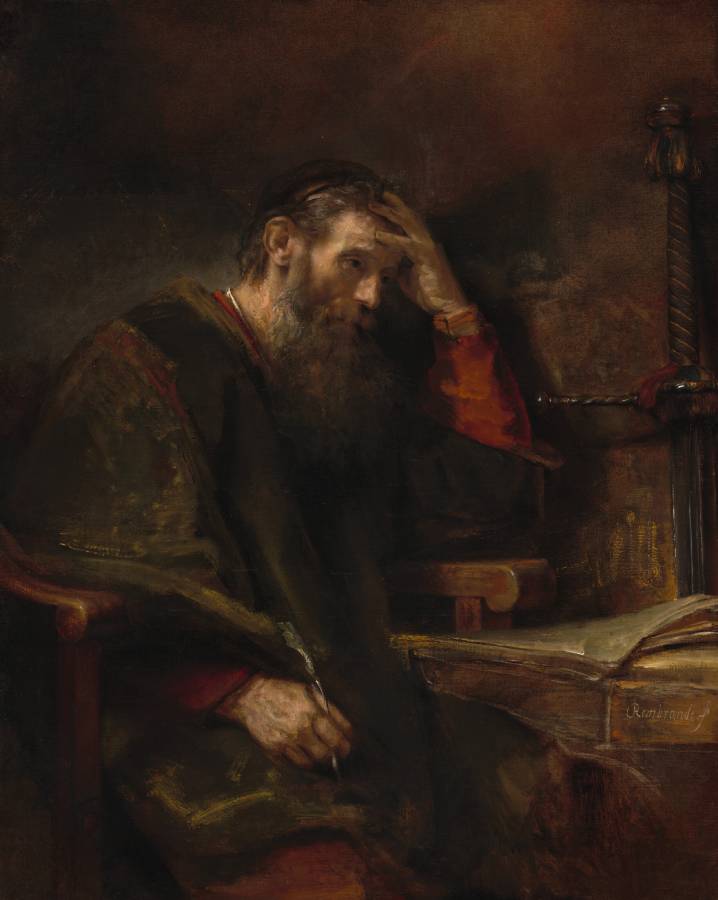Rembrandt and Workshop? (1606-1669)
The Apostle Paul
c.1657
Oil on canvas, 131.5 x 104.4 cm
National Gallery of Art, Washington
After learning the fundamentals of drawing and painting in his native Leiden, Rembrandt van Rijn went to Amsterdam in 1624 to study for six months with Pieter Lastman (1583–1633), a famous history painter. Upon completion of his training Rembrandt returned to Leiden. Around 1632 he moved to Amsterdam, quickly establishing himself as the town’s leading artist, specializing in history paintings and portraiture. He received many commissions and attracted a number of students who came to learn his method of painting. Throughout his life Rembrandt was fascinated by the apostle Paul, perhaps because Paul’s writings were the most important source for Reformation theology, or perhaps because he personified the Christian ideal of grace received independently of merit. Sitting at a table in his prison cell, the apostle ponders the words he is about to write in the epistle that lies before him. The solemn expression of Paul’s strong features underscores the depth of his belief and sense of purpose in his mission to spread Christianity to the heathens. The sword visible above the book is as much the “sword of the Spirit,” the term he used to describe the word of God in his letter to the Ephesians, as it is the symbol of his military prowess before his conversion and the sign of his eventual beheading and martyrdom. The gentle light that illuminates Paul’s head, hand, and epistle has no defined point of origin. By depicting Paul at half length rather than full length, Rembrandt has brought the viewer closer to the figure of the saint, whose intensity of expression is keenly felt. Shown from about the knees up, an older, bearded, pale-skinned man sits at a desk with his head in one hand in a shadowy room in this vertical painting. His body is angled to our right, and he sits in a heavy wooden armchair next to a desk. His left elbow, farther from us, rests on the chair’s arm, and he holds that hand to his forehead. He holds a quill with his other hand, which brushes his knee. He has ash-brown hair covered at the back by a cap and a long shaggy beard. He looks off to our right with dark, shaded eyes. His voluminous brown robe is brushed loosely with golden brown highlights. The rust-red garment under the robe is visible at the sleeves, neckline, and one knee. The desk, to our right, has a stack of papers or parchment. The oversized hilt of a long sword leans against the wall behind the desk. The background is painted with areas of earth and chestnut brown. Some areas of the scene are loosely painted so brushstrokes are visible, especially the brightest white highlights on his collar, the quill, the edges of the parchment, and glints on the sword. The artist signed the painting on the face of the desktop, near the lower right corner: “Rembrandt f.” (NGA)
